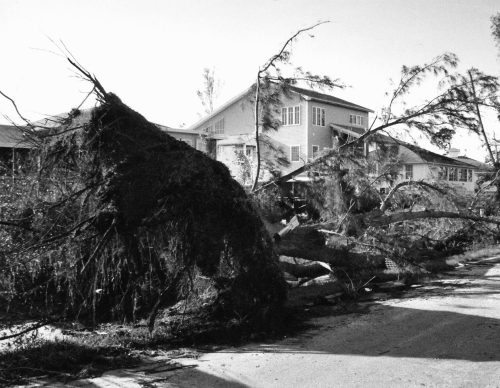The Randell Research Center has received a grant of $122,700 from the Division of Forestry, Florida Department of Agriculture and Consumer Services, to plant more than 900 native trees at the Pineland Site.

Also included are funds earmarked for removal of invasive exotic plants, such as Brazilian pepper. The grant proposal was written by John Worth and RRC Advisory Board member Rick Joyce. The planting will be supervised by Rick, a certified arborist who will donate his time to the project. We are counting on volunteers to help plant, water, and mulch, so this is your chance to get some exercise while learning about native plant cultivation.
The RRC qualified for this grant because in August of 2004, the 50+ acres of land we manage suffered a direct hit from the eye-wall of Hurricane Charley, with sustained winds exceeding 150 mph and a storm surge of more than 3 feet. Tree and shrub damage was extensive, costing $18,500 for debris removal alone, and dispersing the seeds of exotic invasive plants throughout low-lying areas of the property. The new project will involve complete removal and herbicide treatment of exotic pest species from storm-affected areas, and the planting and maintenance of a range of appropriate native trees to reforest these areas as well as other open areas of the site. The plan is to create “ecological restoration islands” of 40-50 trees in public areas, restoring shade to the recently opened 3,700-foot-long Calusa Heritage Trail.

Many people in southwest Florida have learned firsthand that native trees often stand up to high winds better than such exotics as the ubiquitous Australian pines. Native trees, which are well adapted to local soil and weather conditions, provide shade, protection from storms, and habitat for wildlife. We hope that in addition to providing much-needed shade for visitors along the Calusa Heritage Trail, the project will be a positive and visible example of reforestation and habitat restoration in a critical shoreline area of a quickly-developing coastal region in South Florida. For further reading, see Growing Native, by Richard W. Workman, published by the Sanibel-Captiva Conservation Foundation, Inc.
This article was taken from the Friends of the Randell Research Center Newsletter Vol 4, No. 2. December 2005.